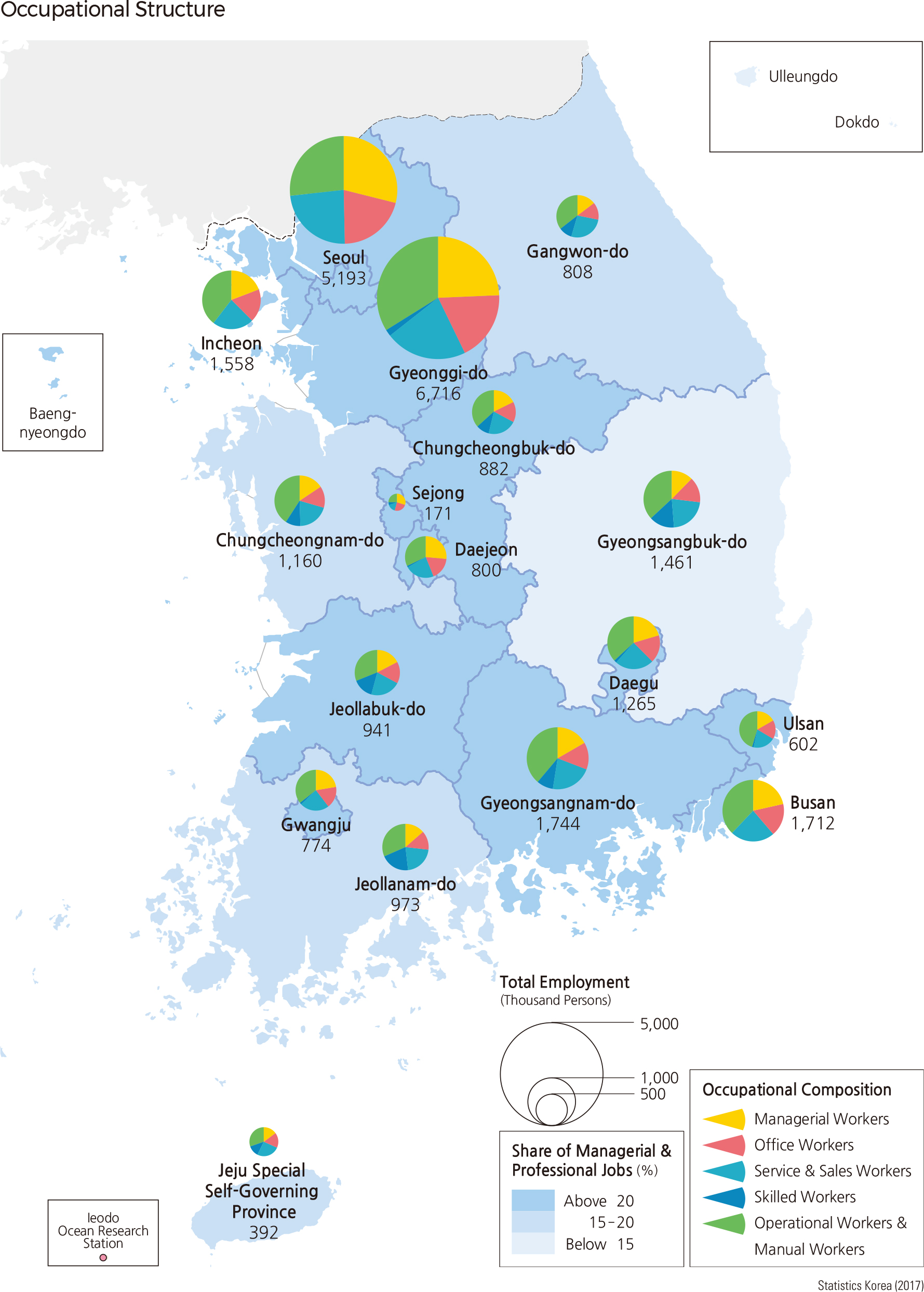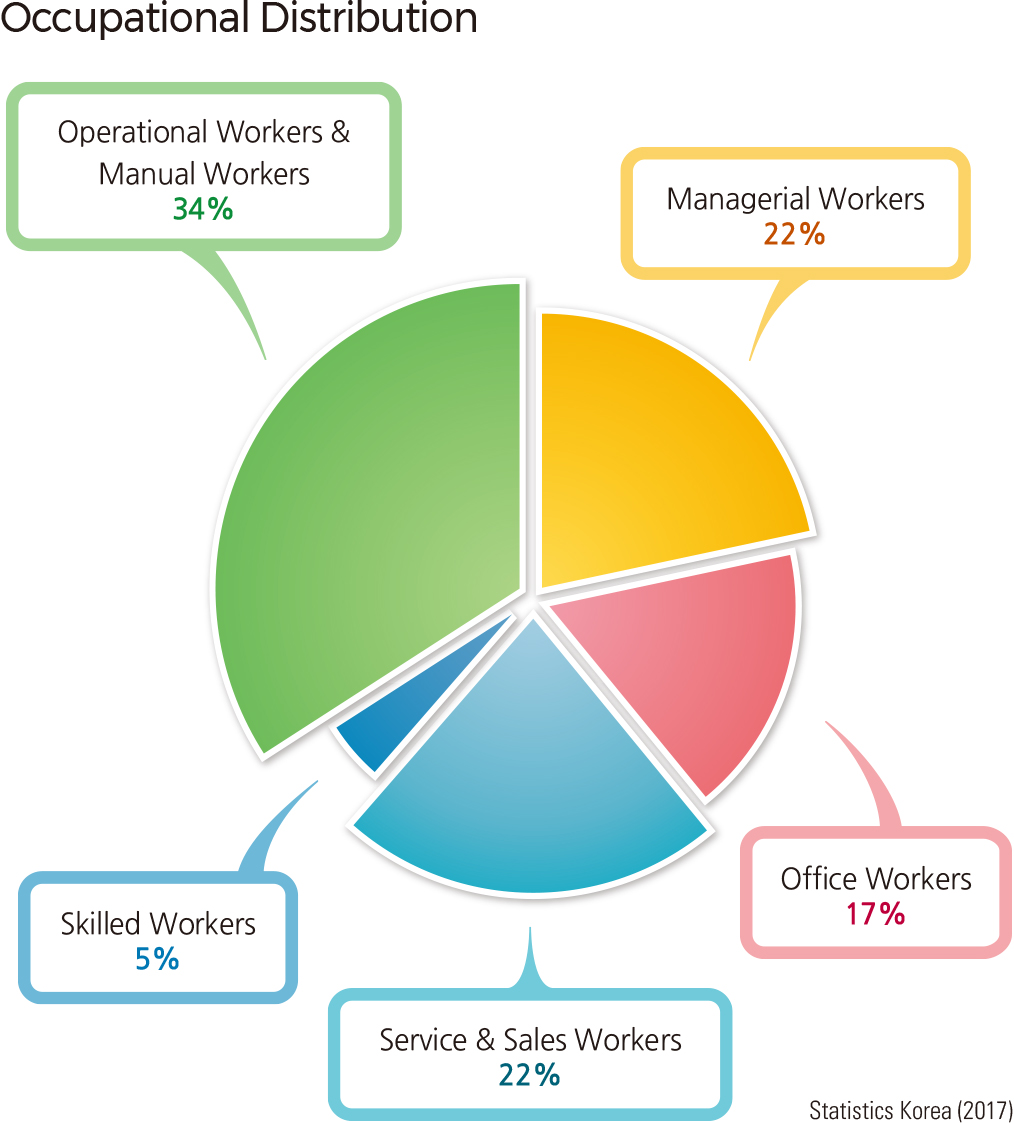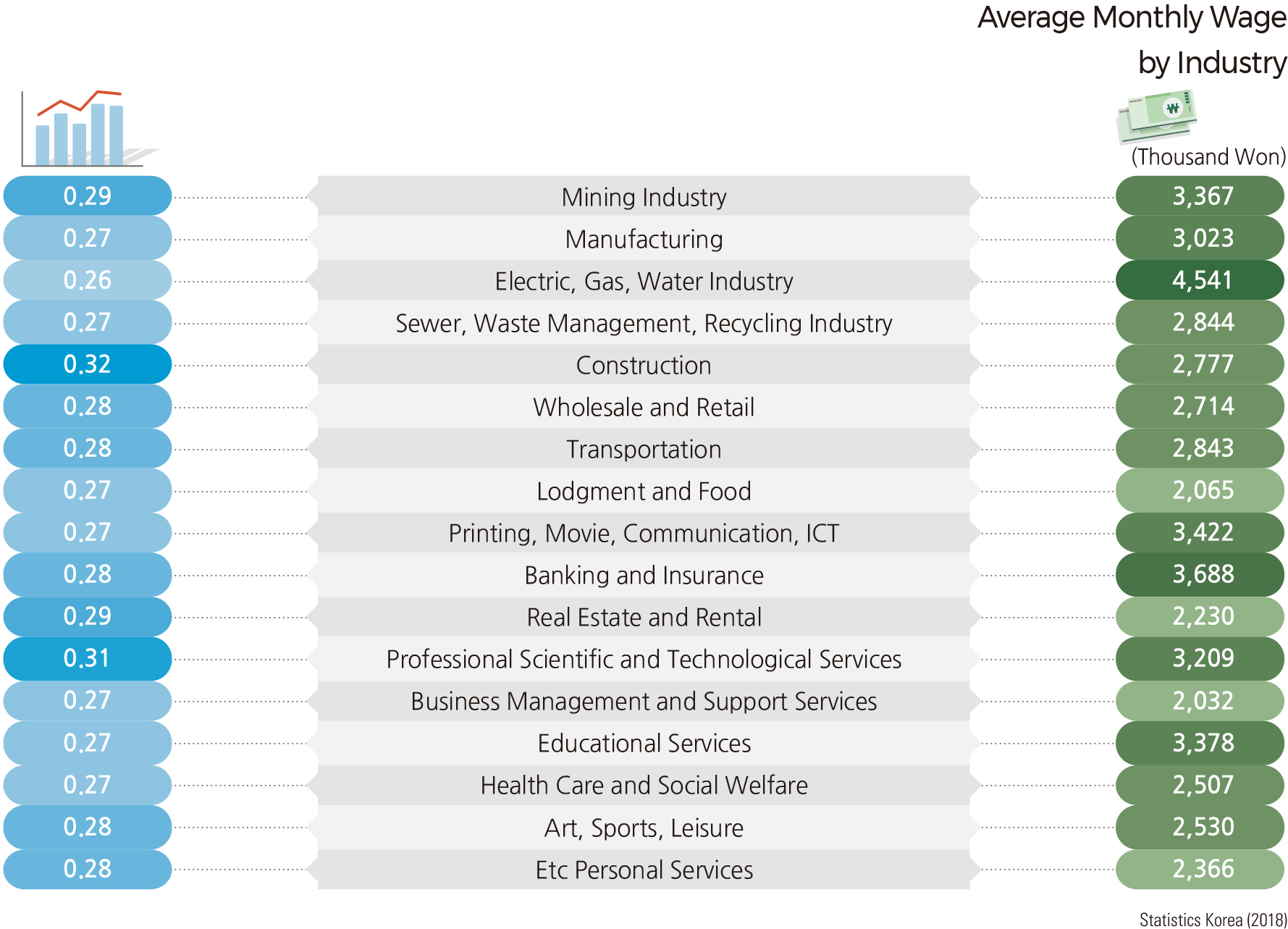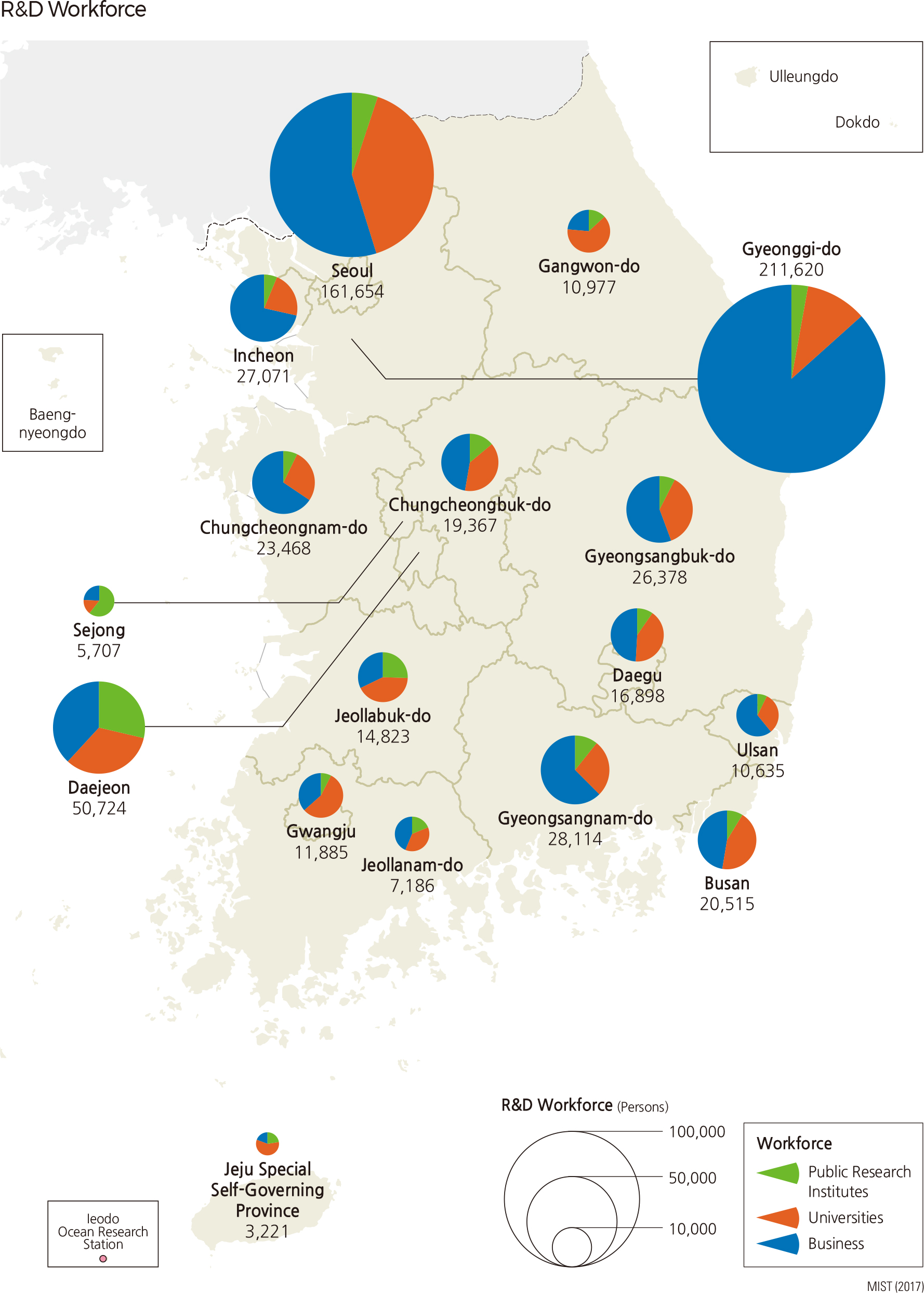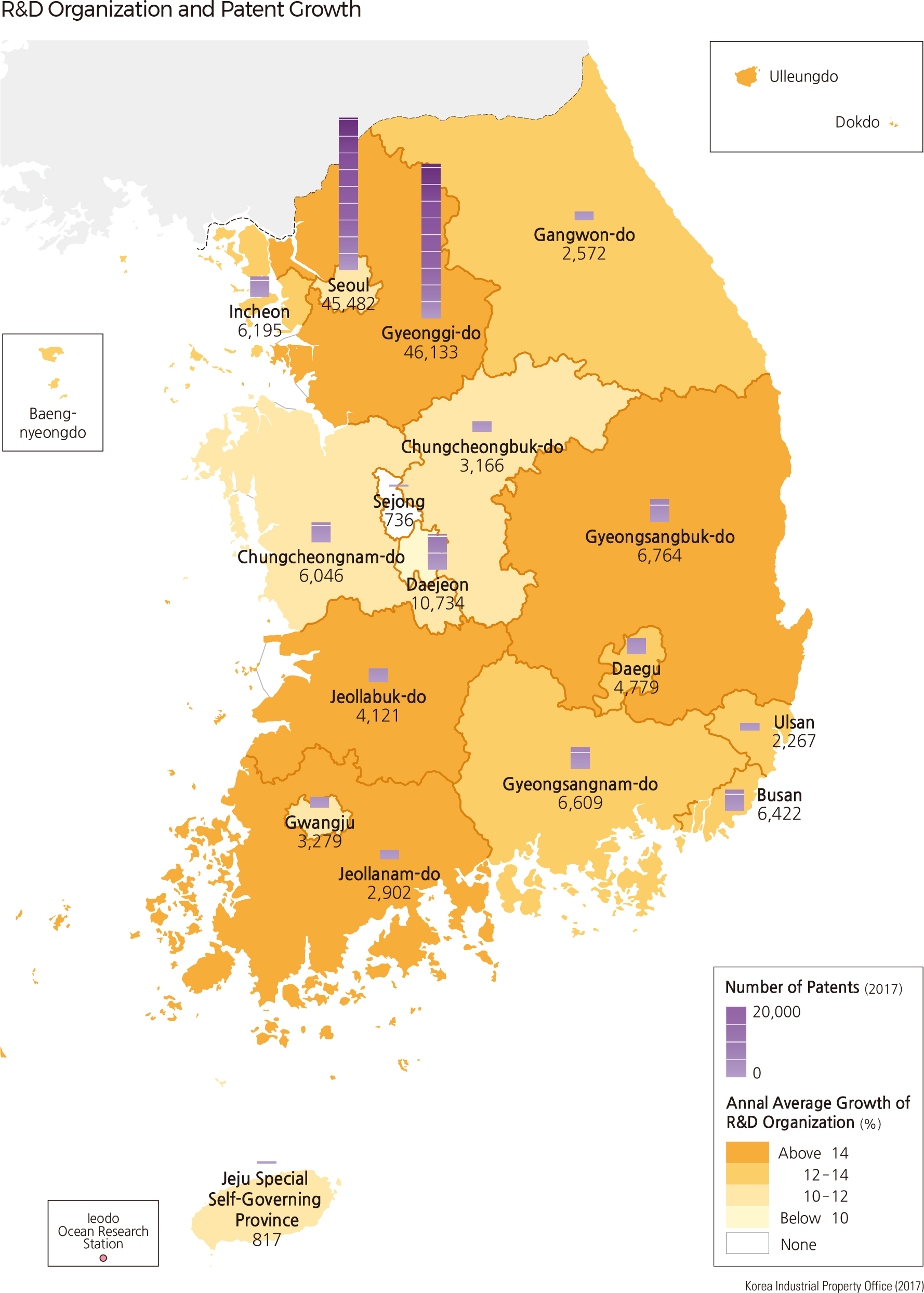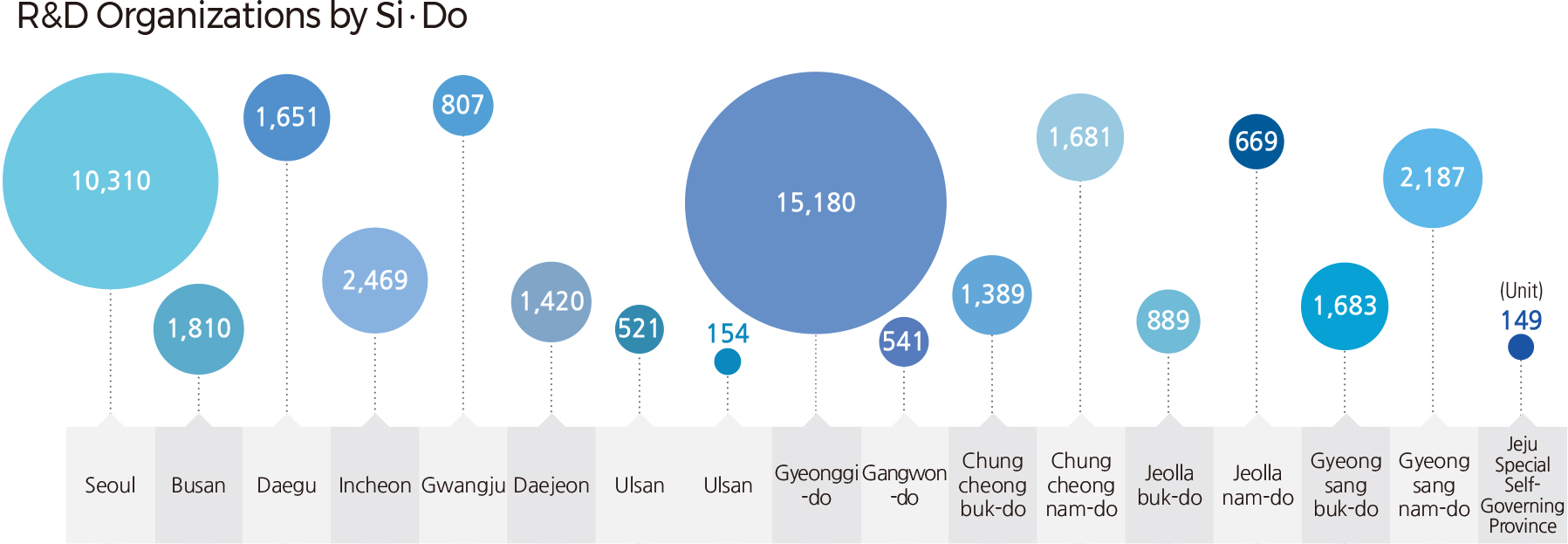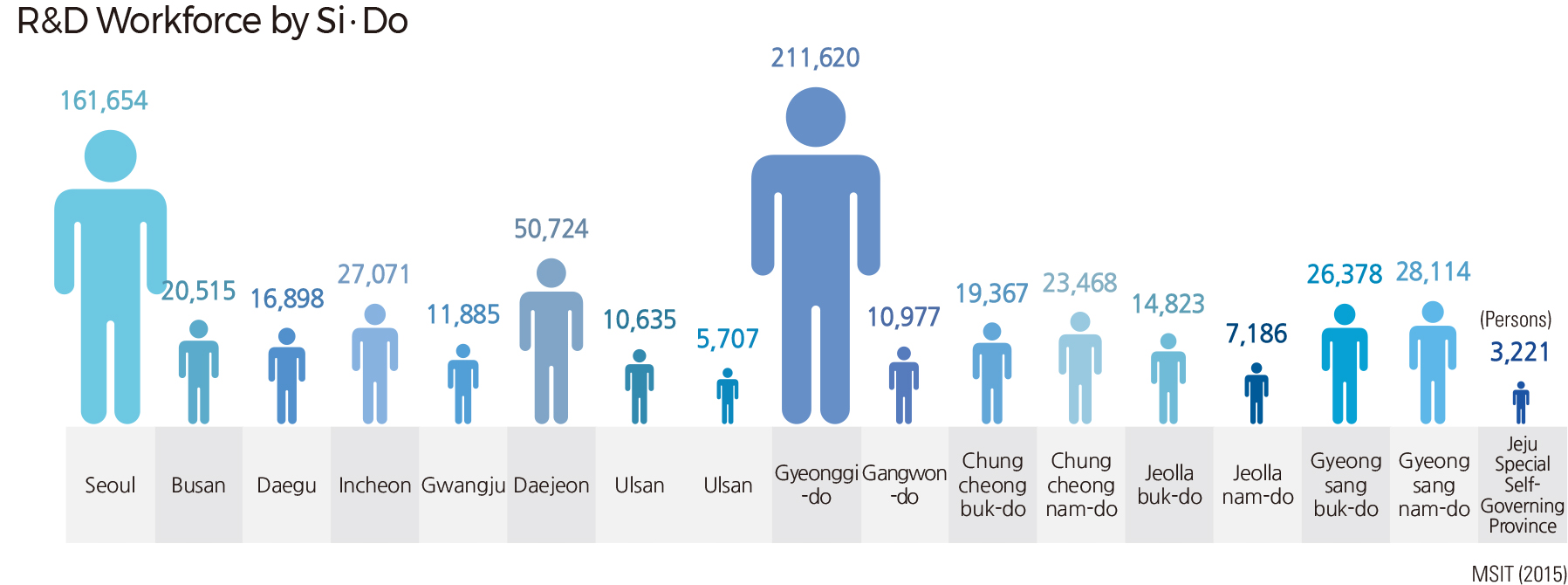English I 2019
Employment structures within in-dividual provinces are experiencing remarkable transformations due to regional industrial growth. At the national level, professional workers, clerical workers, and manual workers have increased in number rapidly to collectively become a polarized growth group of occupations. On the contrary, technicians and related technical workers, as well as heavy machine operators, equipment workers, and assembly workers, have all decreased. People working in service and retail represent the largest share of employed workers, but this trend seems to be decreasing.
With the transition to knowledge-based and creative economies, research and development (R&D) and regional innovation-related capability became critical factors in determining both the outcome of regional development and regional growth potentials for the future. Even though research and development investment as a percentage of GDP in Korea is now higher than the OECD average, the Korean government still maintains its focus on intensifying innovation capacity for regional industrial growth. This policy to continue research and development support is based on the argument that regional innovation-oriented policies can indeed support regional innovation, promote technological transfer effects, and improve continuous and self-sustaining regional growth.
The research and development investment that contributed to the remarkable economic success in Korea shows apparent spatial disparity across different provinces. This spatial disparity is considered a significant regional problem; however, it can be used to gauge the effects of disparity on regional economic growth, and it could have a decisive impact on the future potential for regional growth.
Spatial inequality in research and development is also apparent in the distribution of research and development organizations across the provinces. The capital region consisting of Seoul, Incheon, and Gyeonggi-do alone accounts for 64.2% of total organizations devoted to innovation in the nation, which is to say it clearly is the key hub for research and development activities in Korea. |


